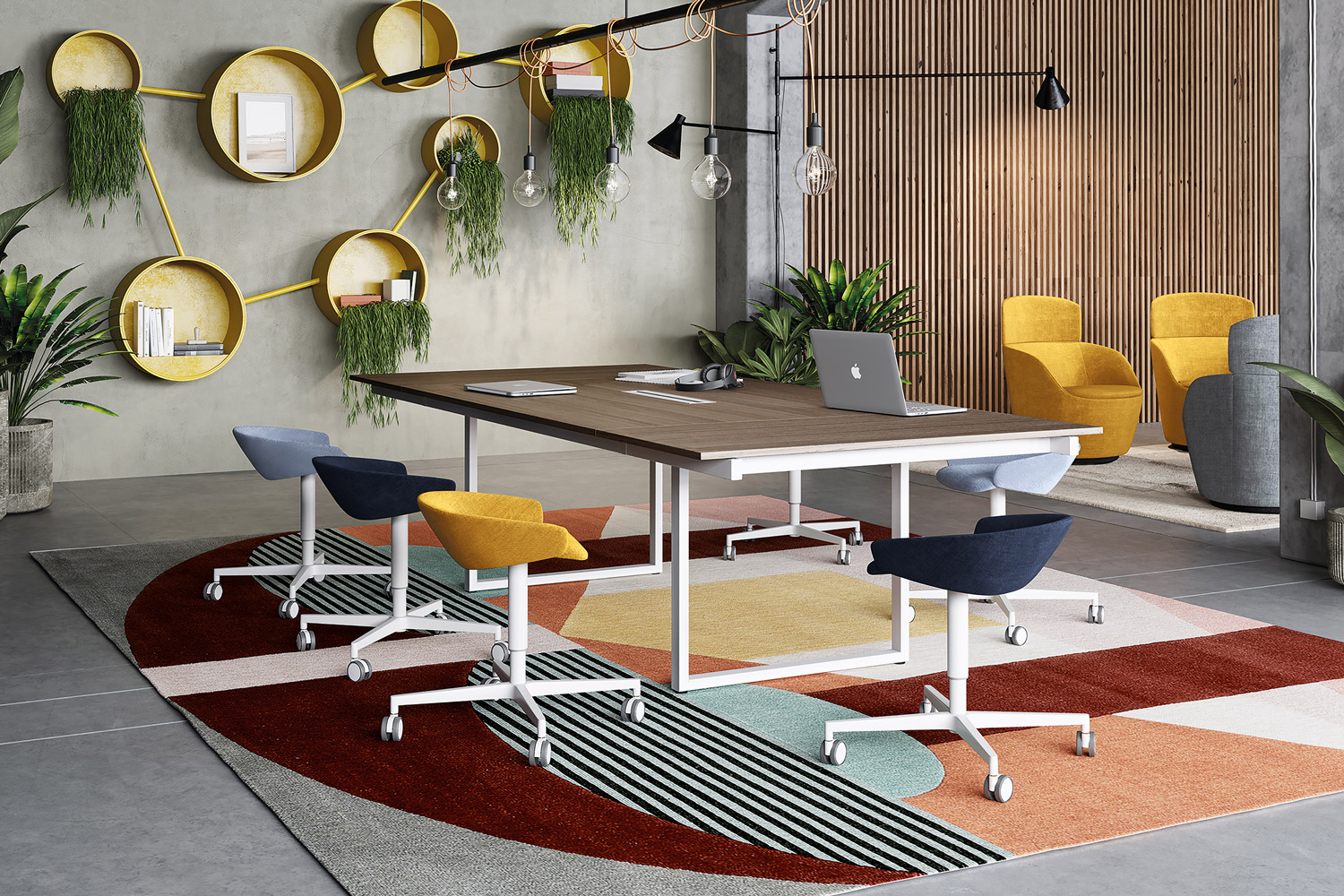The traditional office is now an outdated concept. When designing a new space, relying on the classic office-management-meeting room combo is no longer sufficient: an extra step must be taken, while taking into consideration everyday needs.
Among them is the need to collaborate, which is something that takes different shapes and forms depending on the sector, the company function or the project at hand.
The conference room is a must, of course, but it’s not the only room in the office dedicated to meetings. There is increasing talk of ‘collaborative workspaces’, which are areas of the office dedicated to socialising, problem solving and training.
So how should we design them? Here are some ideas.
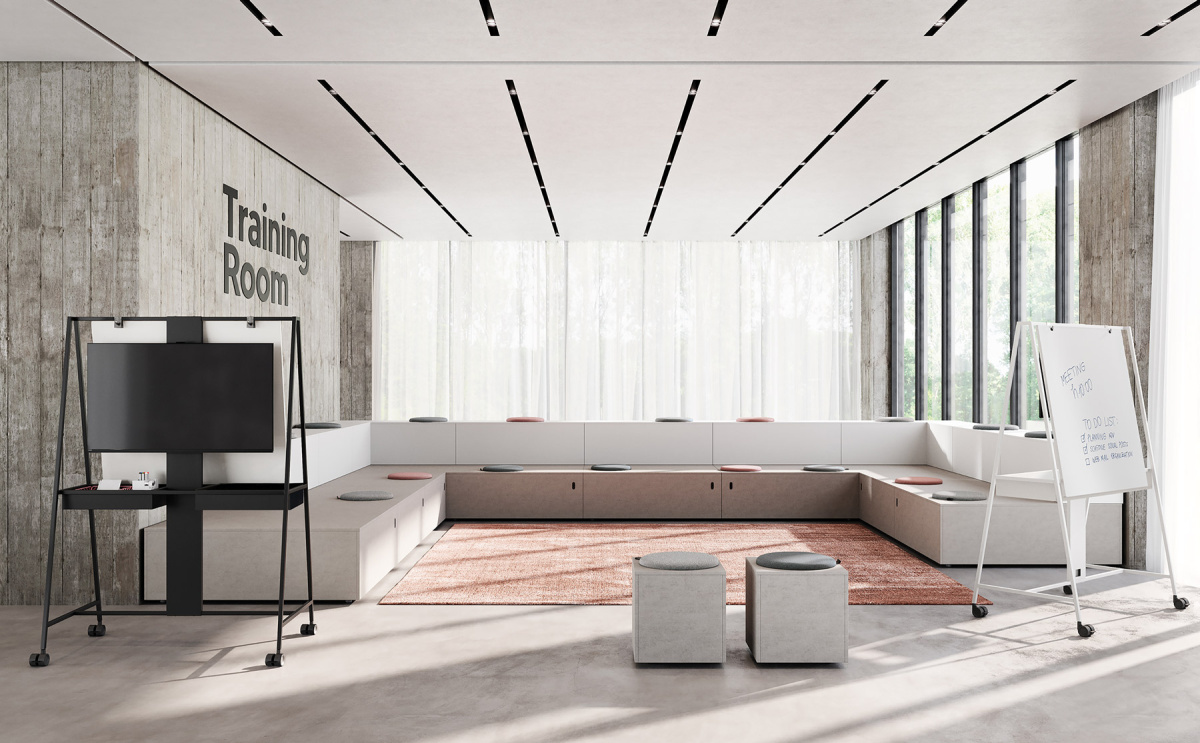
Small amphitheatres for presentations
Why limit yourself to a meeting room for presentations? In the most creative environments the pitch area, which is usually a semi-circular room reminiscent of an amphitheatre, is becoming increasingly popular.
The ‘stage’ is left to those who have to present the project in turn, while the ‘spectators’ can sit comfortably on steps or on poufs specially positioned for the event.
This kind of environment also lends itself well to training sessions, thanks to the use of mobile elements such as the Agile whiteboard/monitor on wheels.
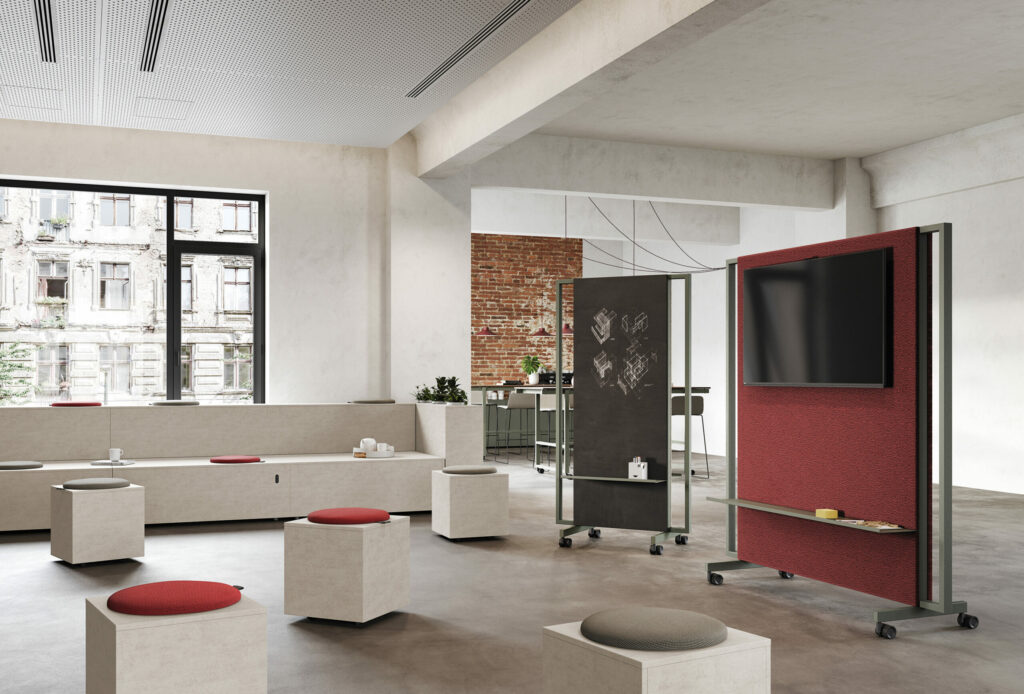
Training rooms
Training rooms, as mentioned above, are an increasing need. They can be used to accommodate external speakers or for skill sharing moments between transversal teams.
Even in these spaces, the furniture is the main protagonist: monitor and blackboard supports, such as Mediawalk, easily movable seating, such as Gradone and poufs with integrated writing tablet, such as C1.8, are indispensable.

Lounge areas
We have often spoken about the importance of relaxation areas (for example in this article). The must-have elements for these types of spaces are two: sofas and coffee tables.
Even just a small space designated as a lounge area can serve various purposes: welcoming customers and suppliers, holding short informal meetings with colleagues, making phone calls outside the open space or simply having a coffee while sitting comfortably.
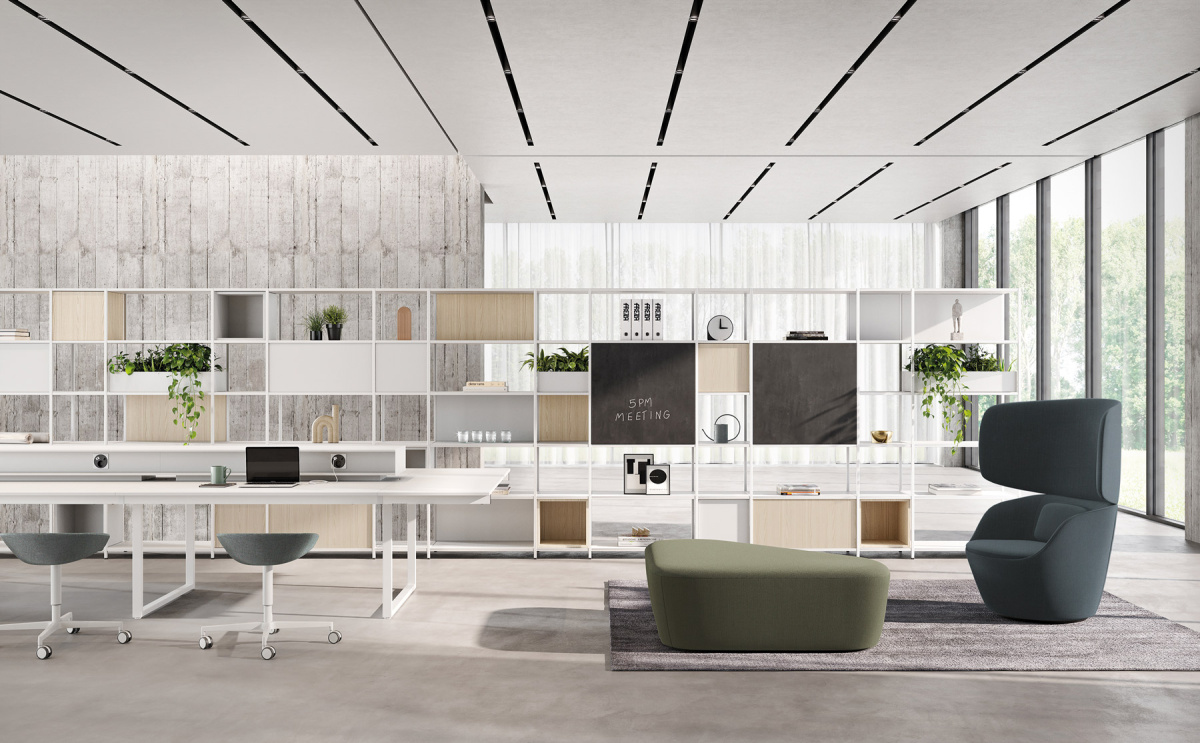
“Collision Spaces”
The so-called collision spaces started to gain popularity shortly before the Covid emergency, especially in highly creative or technological companies.
These hybrid environments allow meetings to develop naturally, breaking out of traditional patterns. These areas don’t follow any hard-and-fast rules: they usually include working desks, small spaces with sofas and armchairs and high tables for working or dining, all in one room.
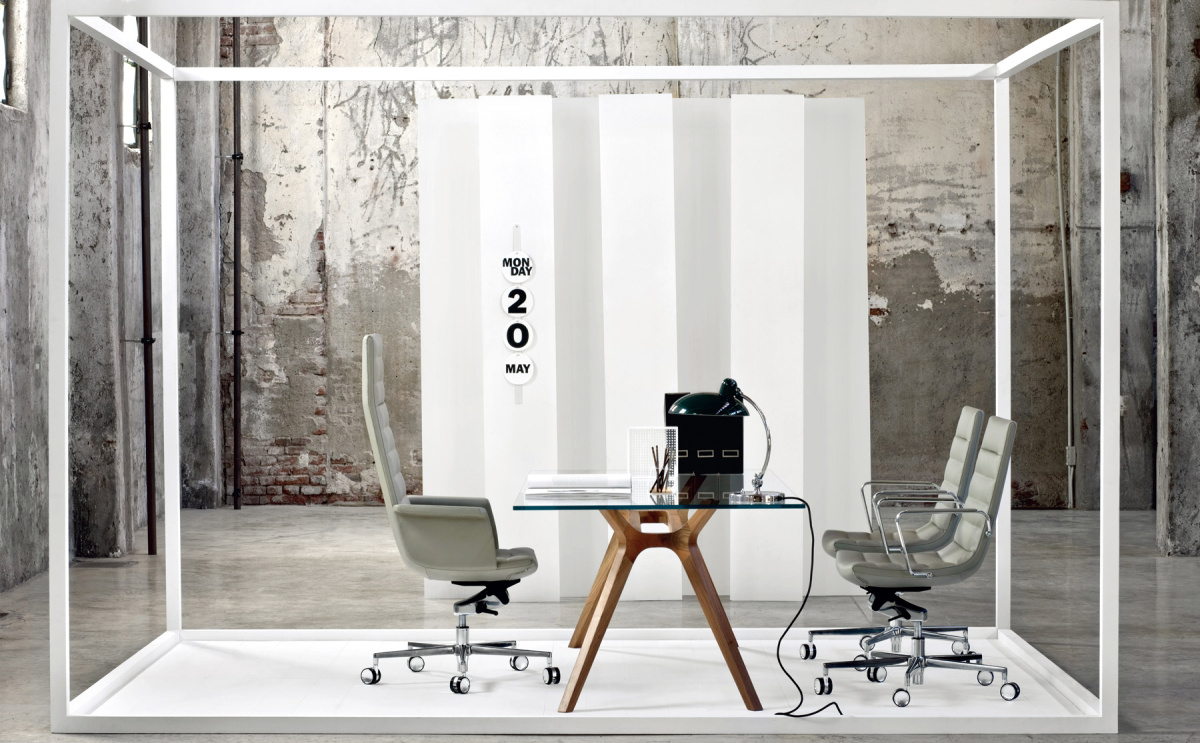
Small meeting rooms
Let’s return to the huddle room concept: a private, soundproofed space with all the necessary elements for a meeting between a few people or a video conference.
An oasis of peace in the confusion that often reigns supreme in open spaces, amidst ringing telephones and the chatter of colleagues.
The common thread between all these proposals is quite clear: today’s companies need spaces where people can socialise and work away from their desks, in an informal and natural way. An inspiration that brings a coworking principle into the traditional office: the possibility to network without leaving the company.
